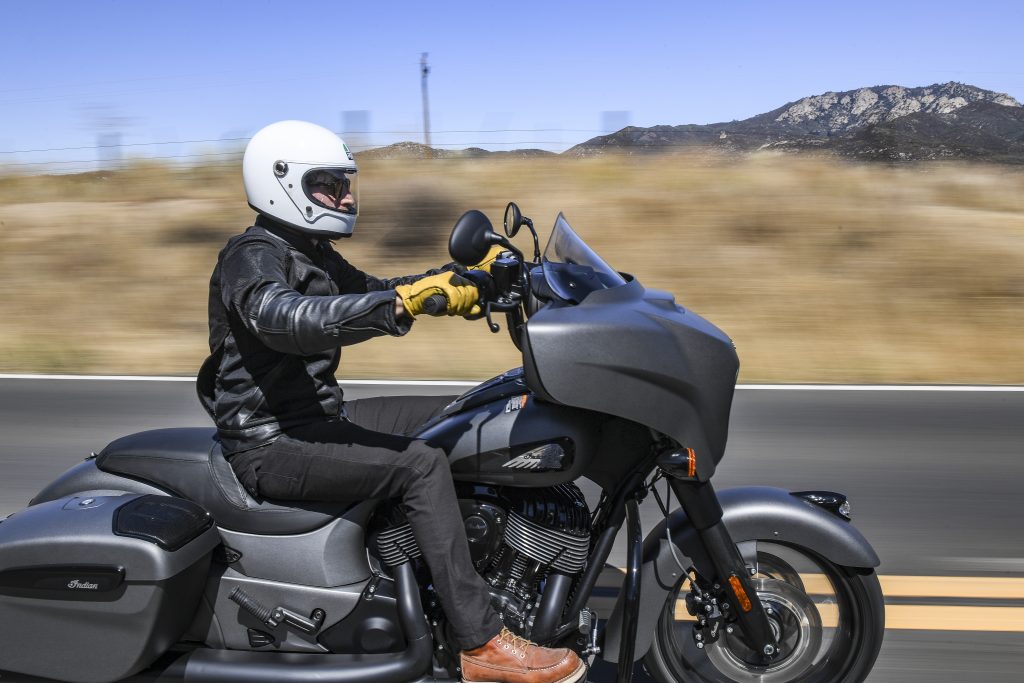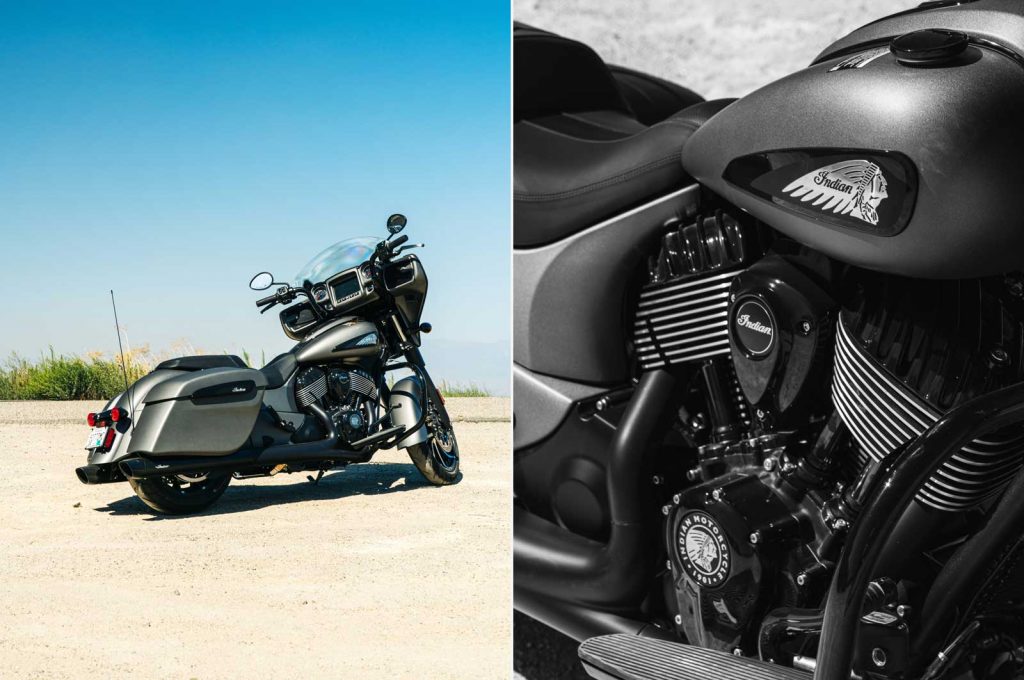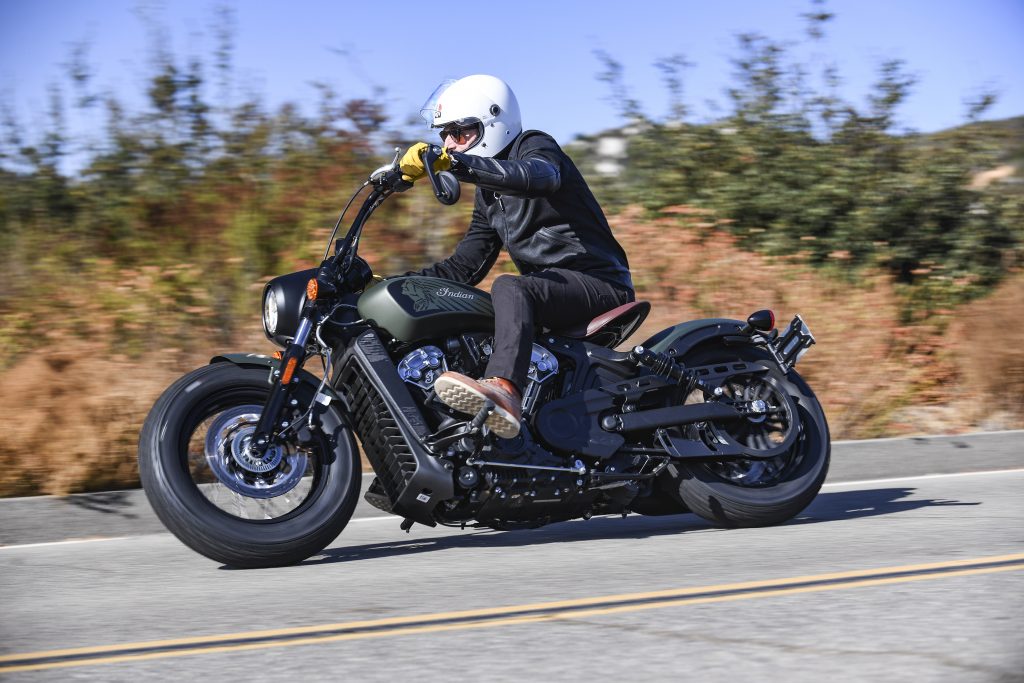100+ Years of Indian Motorcycles
Riding their 2020 offerings, we find the century-old motorbike brand continues to deliver

Founded in 1897, the Hendee Manufacturing Company would produce bicycles under the name “American Indian” and then simply “Indian.” The brand then assumed the name Indian Motorcycle Co in 1901 and launched a prototype and two production units. They began to sell motorcycles to the general public in 1902, and one year later co-founder Oscar Hedstrom set the then motorcycle world speed record of 56mph.
In the years that followed, Indian set numerous speed and endurance records, and was successful in racing as well, grabbing headlines in 1911 when their team finished first, second, and third at the Isle of Man TT in Ireland. When the US entered WWI in 1917, Indian sold the majority of their Powerplus bikes to the US government, which left their dealership network without stock for the public. While the bikes were popular within the military, by the time the war was over, the US public had collectively turned its attention to Harley-Davidson. Although they continued to innovate with models like the Scout, Chief and Four, Indian would be in the shadow of the Milwaukee-based firm until they eventually ceased operations in 1953.

Between the ’50s and ’90s, a number of attempts to sell motorcycles bearing the Indian name were made but none were true Indian machines. The trademark for the brand name was ultimately awarded to the “Indian Motorcycle Company Of America” in December 1998 and, a century after Hendee first produced bicycles bearing the Indian name, it would officially appear on motorcycles made in America.
Now, some 20 years later, the Indian brand name has changed hands twice more before finding itself under the umbrella of Polaris Industries—where Indian Motorcycle International, LLC currently exists. With headquarters in Medina, Minnesota and manufacturers in Spirit Lake, Iowa, Indian rides a renaissance that started in 2013, when the first three new bikes went into production. Currently Indian offers 16 different models based on five different platforms—each with their own distinct personality.

In order to get to know these bikes better, we join Indian for a day of riding in Southern California where we are able to experience what’s new for 2020 and get an idea of what makes the original American motorcycle brand as relevant as ever.

We roll out of Costa Mesa first thing in the morning amid the rumble of the new 116-cubic-inch “Thunder Stroke” engine, the air misty and thick with the smell of salt. The appropriately named air-cooled V-Twin makes 126 lb-ft of torque and comes standard on seven 2020 models, including the Chieftain Dark Horse which was our mount for the majority of the outbound ride. Wearing a handsome shade of matte gray (aka “Titanium Smoke”) the 830-pound vehicle looks intimidating, but thanks to a low seat and unobtrusive footboards, it’s easy to maneuver out of parking spaces. On the move, the weight of the bike disappears and you’re left to comfortably cruise over miles of asphalt.

The V-Twin symphony can be amplified by an optional stage one performance kit that includes a slip-on exhaust which certainly improves the sound on its own, but really comes alive with the addition of the stage two performance kit, which includes cams, high-flow fuel-injectors and throttle body. That amounts to a 17% horsepower boost when paired with the stage one kit. A stage three big bore kit turns the 116 Thunder Stoke up to 11, boosting another 20% of horsepower.
Should you get tired of the bass-heavy thrum of the exhaust being your sole source of auditory entertainment, the new PowerBand Audio Plus system lets your tunes ring out through integrated speakers in the fairing and saddlebags via Bluetooth. Now 50% louder than the stock audio system, the option has an impressive nine-band equalizer that can be tinkered with on the seven-inch screen—just one of many features found in the completely redesigned Ride Command System. Customer feedback led Indian to add a new quad-core processor to provide the fastest infotainment system available on two wheels, as well as to allow for live traffic and weather overlays on the map. More intuitive than many systems found in automobiles, Ride Command is operable with gloves on, takes no time to learn and doesn’t detract from the riding experience.

That said, for those who prefer more of a raw experience, the redesigned 2020 Springfield Dark Horse is essentially a Chieftain Dark Horse that ditches the front fairing in favor of a large headlamp enclosure and 12-inch mini “ape-hanger” bars. It’s pure bagger bliss: comfortable, loud and surprisingly dynamic on winding mountain roads.

As is the case with all Dark Horse models, any chrome is swapped out for matte black and the result is a sharp look that appears edgy without trying too hard. The signature illuminated Indian-head fender light introduced in 1947 adds just the right amount of retro flair to each of the big bikes, but really stands out on Dark Horse models, particularly the green “Sage Smoke” Springfield.

While the big bikes repeatedly impress, it’s the two smaller ones that really stand out. To celebrate the centenary of the Scout, Indian has produced a special edition of their iconic model which pays homage to the original. Introduced in October 1919, the first Scout was seen as innovative right from the start, being the only American-made V-Twin with its transmission bolted right to the engine casing—allowing for a geared primary drive instead of a belt or chain drive. Designed by Irish engineer and AMA Hall Of Fame motorcycle racer Charles B Franklin, the original 37-cubic-inch Scout would prove a durable and reliable motorcycle during its seven-year run, until it was replaced by the Scout 45 in 1927.

The 100th Anniversary Scout features the iconic Indian Motorcycle Red paint and Gold pin-striping of the original, as well as other vintage touches like low-slung “beach cruiser” bars, black wire wheels, a luggage rack and chrome finishing. Although it has a retro appearance, the supple leather solo saddle delivers modern comfort and it offers a wildly satisfying ride—especially when twisting the grip to unleash the 100 horses produced by the liquid-cooled 69 cubic-inch V-Twin. At 585 pounds with a full tank, the Scout 100 feels quite lithe and, while its low stance doesn’t allow for serious lean angle, it’s a joy rolling through twisting roads. A suite of new accessories (including a quick-release color-matched fairing with a two, five or seven inch windshield) aims to encourage riders to embrace longer rides.

Given the choice, we’d take the Scout Bobber Twenty exactly as Indian has it set-up during our ride—with the exception of adding the raucous two-into-one exhaust. For city riders, it’s plenty of bike.
That said, a day out with Indian ends in an appreciation for baggers. The result is—for many—big plans to fill saddlebags with essentials, queue up our favorite road-trip playlist and fully immerse ourselves in the big bike lifestyle.
Images by Andrew Maness












